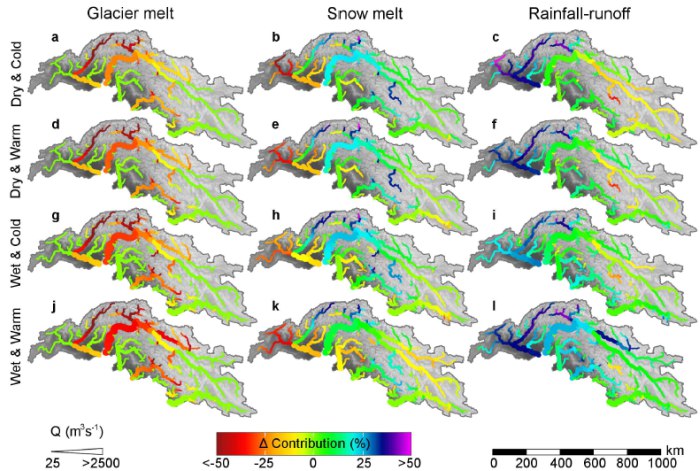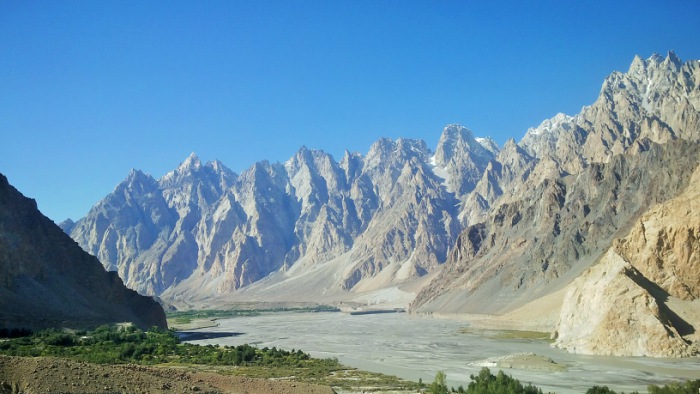The Indus is one of the most meltwater-dependent rivers on Earth, and hosts a large, rapidly growing population and the world’s largest irrigation scheme. Understanding the hydrology of the upper Indus basin is challenging. The Hindu Kush, Karakoram and Himalayan mountain ranges are difficult to access, hampering field measurements of meteorological, glaciological and hydrological processes. These processes are therefore still poorly understood. To make it more complex, climate change projections for the Indus basin show a very large spread. In our recent (open access) paper published in PLOS ONE we present hydrological projections for the 21st century in the upper Indus basin, based on our Spatial Processes in Hydrology (SPHY) model forced with an ensemble of downscaled climate change scenarios. The publication was a joint effort of FutureWater, ICIMOD, and Utrecht University.

The focus of the analysis in our study is not only on changes in sources of runoff and water availability but also on changes in seasonality and hydrological extremes, which are still large unknowns in the upper Indus basin. We conclude that the upper Indus basin faces a very uncertain future in terms of water availability towards the end of the 21st century. Despite the large uncertainties in future climate and water availability, basin-wide patterns and trends of intra-annual shifts in water availability are consistent across climate change scenarios. For the near future these trends mainly consist of minor increases in summer flows combined with increased flows during other seasons. For the far future the trends show decreases in summer flows combined with stronger increasing flows during the other seasons. Furthermore, increases in intensity and frequency of extreme discharges are found for most of the upper Indus basin and for most scenarios and models considered, implying increases in flooding events during the 21st century.

This paper results from two projects FutureWater is involved in:

